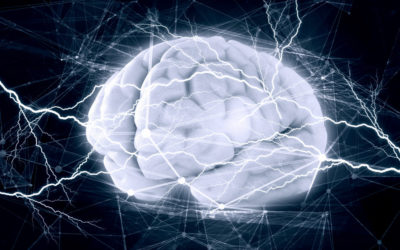Quick Hits
Daily brief research updates from the cognitive sciences

Social mingling of mice can be controlled by zapping certain brain regions
There has been plenty of research into brain areas that contribute to our social brain but these researchers around Stephen Mague at Duke University went a step, or two, further and managed to identify a network that controls social mingling in mice. What’s more they could then manipulate the network to make the mice more, or less, gregarious.
First off, the researchers identified eight regions that are known to be involved in social aspects of behaviour. They then made recordings from these areas in social scenarios. The multiple readings from these areas (which are immense amounts of data in themselves) were then fed into an AI tool that then tried to identify patterns in this complex set of data.
The AI tool, after going through its learning, could then accurately predict which mice would be more social or not from their activation patterns in this network. This shows that the social brain is a network rather than a region.
However, the more fascinating part of this study is that the researchers were than able to manipulate how social these mice were by activating different areas of the network through a technique called optogenetics, zapping and activating parts of this network with laser light and thereby making the mice more, or less, gregarious.
This highlights that the brain operates in networks rather than specific modules or regions and this also opens the path to more refined work in the future focusing on networks and using AI to identify neural patterns.

Andy Habermacher
Andy is author of leading brains Review, Neuroleadership, and multiple other books. He has been intensively involved in writing and research into neuroleadership and is considered one of Europe’s leading experts. He is also a well-known public speaker speaking on the brain and human behaviour.
Andy is also a masters athlete (middle distance running) and competes regularly at international competitions (and holds a few national records in his age category).
Reference
Stephen D. Mague, Austin Talbot, Cameron Blount, Kathryn K. Walder-Christensen, Lara J. Duffney, Elise Adamson, Alexandra L. Bey, Nkemdilim Ndubuizu, Gwenaëlle E. Thomas, Dalton N. Hughes, Yael Grossman, Rainbo Hultman, Saurabh Sinha, Alexandra M. Fink, Neil M. Gallagher, Rachel L. Fisher, Yong-Hui Jiang, David E. Carlson, Kafui Dzirasa.
Brain-wide electrical dynamics encode individual appetitive social behavior.
Neuron, 2022; DOI: 10.1016/j.neuron.2022.02.016
More Quick Hits
Yes, Fake Smiling Does Improve Your Mood
Can just smiling, even if fake, improve your mood? This has been proven, debunked, re-proven and now re-re-proven…
How Your Brain Decides to Help Others in Danger
In times of crises and danger we may hide and flee as our natural instincts would guide us, or do something else: put ourselves at danger and help others.
Two Types of Willpower
There are two types of will power – and one is much more effective…
Our Brains Seem to Use Quantum Computations
It has been proposed that our brain uses quantum processes but this is hard to prove – until now that is…
Insults Trigger the Equivalent of a Slap to the Face in the Brain
What do insults do to our brain wave patterns, do they degrade over time and how do they compare to compliments?
Even a Short Bout of Exercise Can Boost Brain Growth
Exercise is good for you – we all know that. But can just a single bout of exercise do you and your brain any good?






